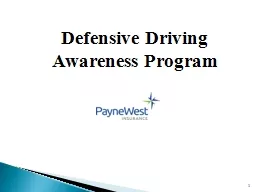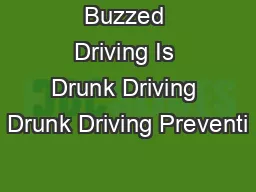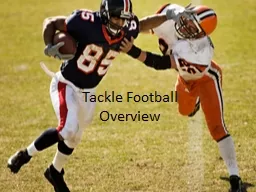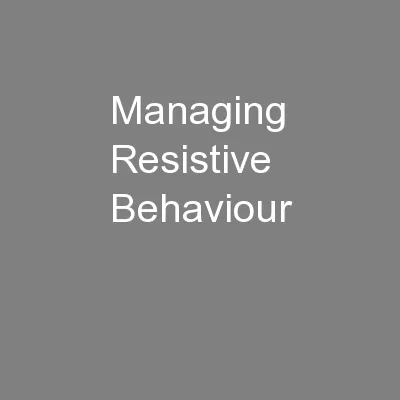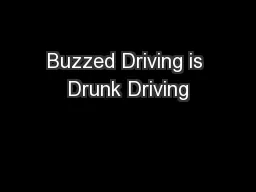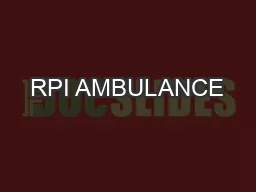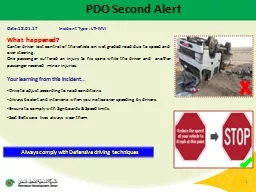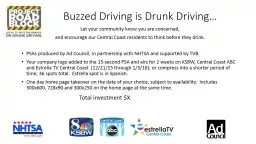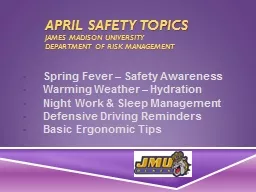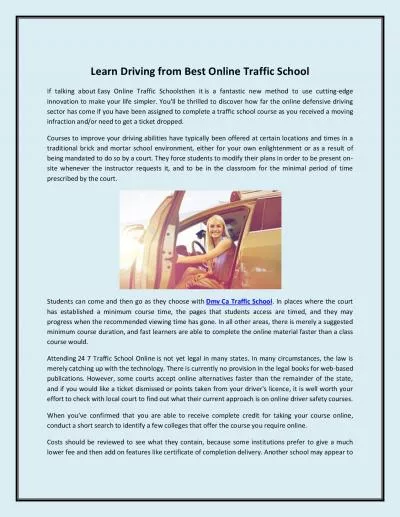PPT-1 Defensive Driving
Author : jane-oiler | Published Date : 2017-04-11
Awareness Program 2 What is Defensive Driving ANSIASSE Z151 defines defensive driving as driving to save lives time and money in spite of the conditions around you
Presentation Embed Code
Download Presentation
Download Presentation The PPT/PDF document "1 Defensive Driving" is the property of its rightful owner. Permission is granted to download and print the materials on this website for personal, non-commercial use only, and to display it on your personal computer provided you do not modify the materials and that you retain all copyright notices contained in the materials. By downloading content from our website, you accept the terms of this agreement.
1 Defensive Driving: Transcript
Download Rules Of Document
"1 Defensive Driving"The content belongs to its owner. You may download and print it for personal use, without modification, and keep all copyright notices. By downloading, you agree to these terms.
Related Documents

